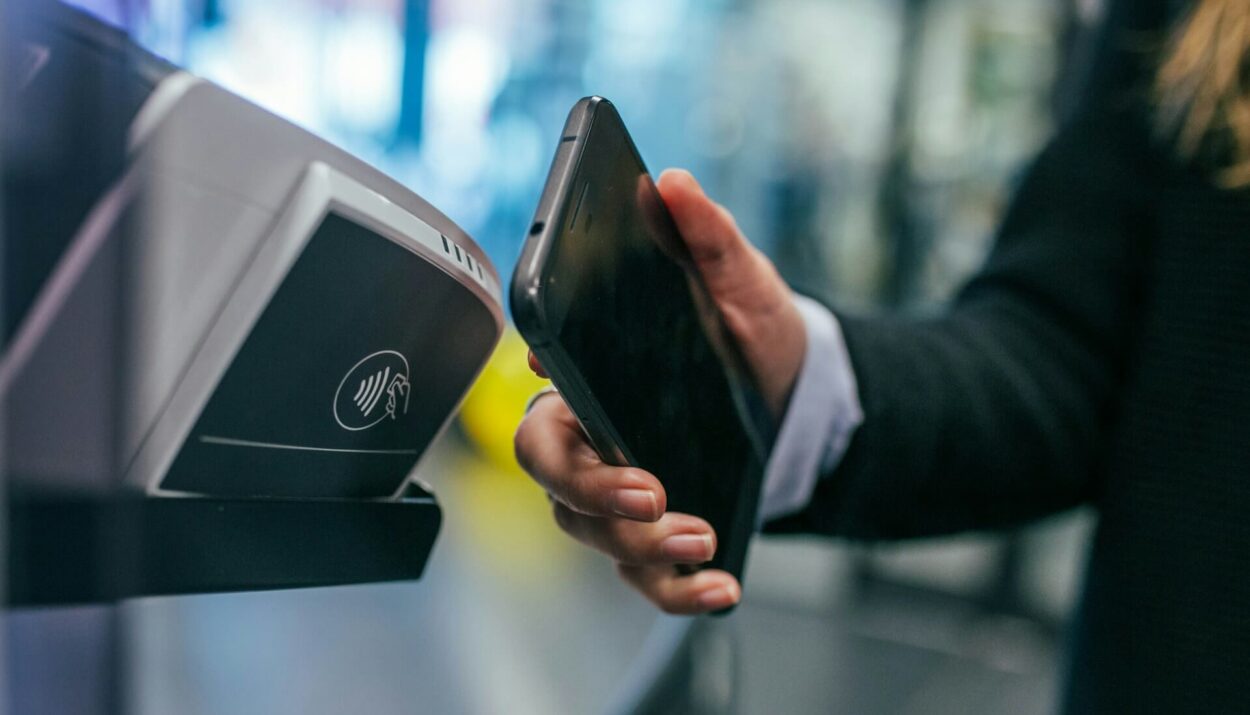The financial landscape is transforming as swiftly as the digital era itself. With the introduction of innovative payment technologies, the days of clinking coins and folding bills are becoming a thing of the past.
In this definitive exploration, we will traverse the cashless revolution, uncovering the advantages for small businesses, elucidating the tech for enthusiasts to ponder, and observing how financial institutions are adapting to this paradigm shift.
The Digital Wallet: A Boon for Small Businesses
For mom-and-pop shops, startups, and local businesses, the transition from cash to digital payments represents a pivotal move toward efficiency, security, and growth. Here are the key ways in which the small business sector is reaping the rewards.
Enhanced Efficiency and Streamlined Transactions
Gone are the days of counting change and managing cash registers. With digital payments, each transaction is seamlessly processed, effectively reducing checkout times and the administrative burdens associated with cash handling.
The immediacy of digital transactions means funds are available instantly, fostering a more efficient cash flow and the ability to make quicker, on-the-fly business decisions.
Increased Sales Through Convenience
By accepting digital payments, businesses capitalize on the widespread customer preference for convenience. Cashless transactions allow for quick tap-and-go payments, online purchasing, and the integration of loyalty programs, resulting in an enhanced customer experience that often translates to increased sales and repeat business.
Security Measures that Keep Frauds at Bay
One of the most salient benefits of digital payments is the robust security features that mitigate the risks associated with cash handling. Encrypted data, two-factor authentication, and real-time fraud monitoring are just some of the protective measures that digital payment solutions provide, keeping both businesses and their customers safe.
Decoding the Tech Behind Digital Payments
The integration of digital payment systems into our everyday lives is a blend of complex technology and simple convenience. This section explains the technological underpinnings for the tech-savvy aficionados.
NFC and Contactless Payments
Near Field Communication (NFC) technology lies at the heart of the contactless payment revolution. By enabling two devices placed within a few centimeters of each other to exchange data, NFC allows for seamless contactless transactions, fostering an ecosystem where smartphones and cards act as wallets.
QR Codes and Mobile Payments
In regions where NFC adoption is slower, QR codes have emerged as a valuable alternative for mobile payments. By scanning a simple code displayed at a merchant’s point of sale, customers can initiate a transaction via their smartphone, linking directly to their bank account or mobile wallet.
Mobile Wallets and Digital Currencies
Mobile wallets such as Apple Pay and Google Wallet have transcended mere convenience, integrating loyalty cards, boarding passes, and, increasingly, digital currencies. The rise of cryptocurrencies, underpinned by blockchain technology, adds a layer of decentralization to digital payments, paving the way for novel methods of transacting value across the globe.
Financial Institutions: Out with the Old, In with the Digital
Banks and financial services have been at the forefront of the move towards cashless systems, adopting and innovating on digital payment solutions to better serve their customers and remain competitive in a rapidly evolving marketplace.
The Shift to Digital-First Banking
The traditional brick-and-mortar bank is being supplanted by digital-first banking models that prioritize online and mobile accessibility. With this shift, financial institutions are not only providing digital payment services but also developing comprehensive digital ecosystems that cater to every financial need of their customers.
Partnership and Open Banking
The advent of open banking legislation and increased industry collaboration has given rise to a multitude of partnerships between banks, fintech startups, and tech giants. These alliances aim to deliver integrated services that leverage the strengths of each party, resulting in more diverse, customer-centric payment solutions.
Future Trends in FinTech
The intersection of finance and technology (FinTech) continues to produce cutting-edge innovations in the realm of payments. Tap-to-pay wearables, biometric authentication, and invisible payments (where transactions occur in the background without explicit action from the customer) are just the beginning of what the future holds for digital payment solutions.
Overcoming the Last Mile: Adoption Challenges and Solutions
Despite the myriad benefits, the adoption of digital payment solutions is not without its challenges. This section explores the roadblocks small businesses and consumers may face and offers strategies to overcome them.
Addressing Technological Barriers
Not all businesses or customers are equipped with the technology necessary to facilitate digital payments. Strategies such as incentivizing the adoption of point-of-sale systems, offering training and support, and government initiatives can help bridge this technological gap.
Cultivating Trust and Security Awareness
For many, especially in older generations, there is a lack of trust or understanding of digital payment systems. Business owners and consumers alike must be empowered with knowledge about the security protocols in place and the measures they can take to protect themselves.
Regulatory Considerations
The complex web of regulations governing digital payments can be daunting for businesses looking to adopt these systems. By staying informed and working with experts, such as legal and financial advisors, businesses can ensure they are compliant while still reaping the benefits of digital payments.
What the Future Holds for Cashless Societies
The global push towards cashless societies is palpable, with some countries leading the charge towards a future where physical currency is obsolete. Here, we gaze into the crystal ball to predict the trajectory of cashless strategies.
The Dawn of Cryptocurrencies
The momentum behind digital currencies, particularly cryptocurrencies, continues to grow. With central banks and large corporations exploring the use of blockchain and stablecoins, the possibility of a global economy largely based on digital assets becomes increasingly feasible.
Social and Economic Impacts
A cashless society redefines the parameters of social and economic interactions. From the way we donate to charities, to the methods through which governments disburse welfare, digital payments promise an equitable distribution of wealth and resources, devoid of the inefficiencies and leakages often associated with cash.
Environmental Considerations
The environmental footprint of a cashless economy is substantially lighter than one that relies heavily on paper and metal currency. Reduced paper production, lower energy consumption, and decreased carbon emissions are just some of the environmental benefits that could accompany widespread cashless adoption.
Ready to Tap into the Future? Steps to Cashless Readiness
For businesses and individuals who wish to ride the crest of the cashless wave, preparation is key. In this actionable section, we outline the steps you can take to become cashless-ready.
Invest in the Right Infrastructure
For businesses, this means acquiring modern point-of-sale systems and online payment gateways. Individuals should ensure their smartphones or wearables are equipped with the latest in payment technology.
Educate and Train Your Team
Business owners and managers must invest in the proper education and training of their teams to ensure a smooth transition to digital payment methods. For individuals, this may involve learning how to use new payment apps and understanding their digital rights and security measures.
Plan for Emergencies
It’s important to have a backup plan, especially in the event of power outages or network failures. Businesses should keep emergency cash on hand, and individuals should have alternative payment methods available when needed.
Final Thoughts: The Cashless Journey Continues
The transformation of our financial reality from physical to digital is not simply a shift in the way we exchange value; it is a reimagining of the very economic fabric that our society is built upon. By understanding the nuances of the cashless revolution, we equip ourselves to make informed decisions and strategies that align with the future.
It’s imperative for businesses to adapt and for individuals to stay informed and engaged. The cashless revolution is more than a trend it’s an evolution, and with the right knowledge and initiative, we can all be active participants in creating a seamless, secure, and prosperous future of finance.






